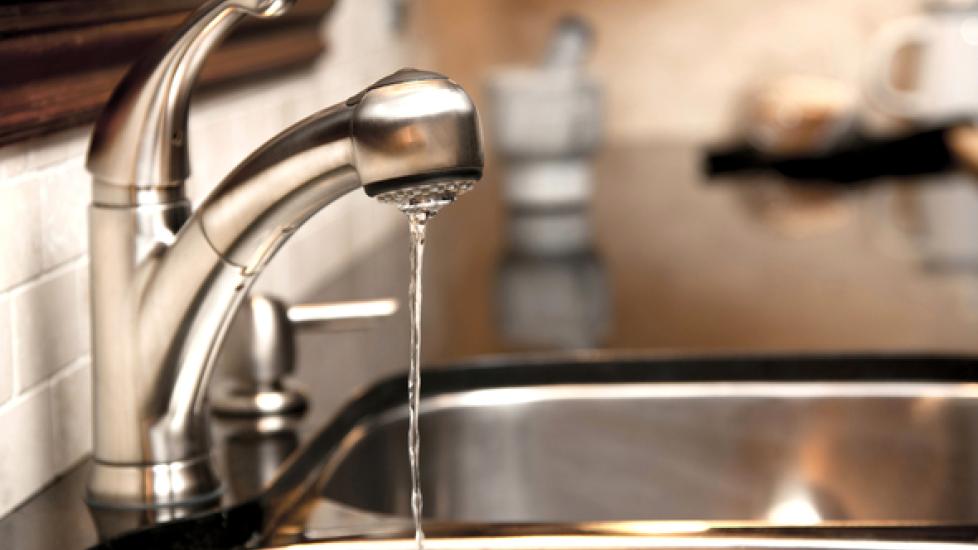Is Tap Water Safe for Dogs?
By Teresa K. Traverse
For something so essential, tap water is usually taken for granted. You probably fill your dog’s bowl with it every morning without giving it a second thought. But is tap water really safe for your dog?
In most cases, yes, says Dr. Ann Hohenhaus, a staff veterinarian at the Animal Medical Center in New York City. But if the water crisis in Flint, Michigan, is any indication, not all tap water is safe. “If you wouldn’t drink this water, you shouldn’t give this to your dogs,” says Hohenhaus.
How to Keep Your Drinking Water Safe
To figure out whether your tap water is safe for you and your pet, consider these recommendations from Pauli Undesser, the executive director of the Water Quality Association (WQA):
1. Obtain a consumer confidence report from your water treatment plant.
Most consumers are on a municipal supply of water, Undesser says. Before that water flows out of the tap, it’s treated at a treatment plant. That plant is required to publish an annual consumer confidence report to give you an idea of what’s in your water. (If you didn’t receive one, contact your water company.)
“There might be things in there that the water treatment plant knows about and they’re working on, but you still may want to go about and do something separately,” Undesser says.
Water treatment plants are regulated at a federal level, but individual states may have stricter regulations. For example, California has laws regulating the amount of chromium-6 in the water. (If that sounds familiar, it’s because it’s the contaminant Erin Brockovich advocated against.)
2. Test your home water supply.
Hard contaminants cannot be seen or smelled, which is why Undesser recommends consumers test their tap water annually. “Testing at the tap is still something that consumers should do to bring awareness to what might be in their water,” Undesser says. “You just never know until you test.”
Consumers should also have their water tested if they notice any sudden changes in smell, taste or color.
While you can buy a water testing kit from a store and mail it off somewhere, Undesser recommends sending your water to a list of EPA-approved laboratories that test consumer water. Some city governments and departments of health will test water for free, she adds.
“There are over 100 contaminants that [the EPA is] regulating that have to be within a certain amount or below a certain amount for it not to be an impact negatively to health,” Undesser says. “If you test for it and you find it, you don’t have wait for the regulation to catch up with it.”
Basic testing costs anywhere from $20 to $50. A more comprehensive test can cost anywhere from $200 to $300, according to Undesser.
3. Consider buying certified products that can help treat your water.
If the test comes back and confirms the presence of contaminants in the water, you can buy certified products that can help treat the water. You could purchase water pitchers, faucet mounts, or even hire a professional to install a reverse osmosis filter under the sink or a filter that treats all the water in your home, Undesser says.
She recommends finding a water treatment professional, as opposed to a plumber, to ensure proper installation. Those individuals can also recommend products that would be the best fit for you. For example, if your water test shows levels of arsenic, you’ll want a filter designed to remove traces of arsenic from the water.
What you do “all depends on what your water quality tests shows you,” Undesser says. “Your test may show that the water coming out of the tap is fine, and it’s just as good as bottled water.”
You may also decide to treat your water without even seeing test results. “The benefit of filtered water is that you are going to help provide an extra layer of protection for yourself and your family,” she says.
What About Bottled Water for Dogs?
If you opt to give your dog bottled water, Undesser advises pet parents to look for certified products. “In most cases, that bottled water has used the same membrane that is in all these other products, whether it’s a pitcher, a faucet mount, or reverse osmosis,” she says. “They’re using those same technologies to give you the good quality for bottled water. It’s just a different way of getting it.”
Consumers should seek out the WQA gold seal or the NSF (National Sanitation Foundation) seal on the label, Undesser advises. “Whether it’s bottled water or a product, you should look for a seal of approval,” she says.
Remember, if you wouldn’t drink the water coming out of the faucet, you probably shouldn’t give it to your dog. And if the city government tells you not to drink the water, your dog shouldn’t drink it either.
“If somebody tests their water or if they smell a change and they’re concerned over it and they’re not going to drink it themselves, then I think it’s logical that they would apply that same thought process to their pets,” Undesser says. But “tap water is still great water, and we should have some confidence of what is there.”
Want to know how much water your dog should drink? Read about the importance of water for dog nutrition.
